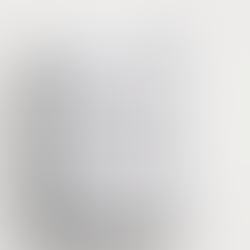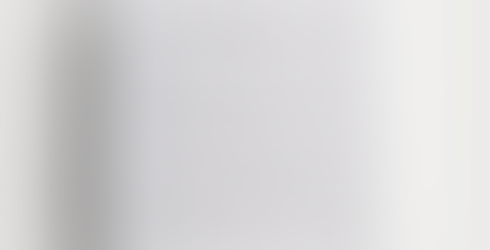Little things make a big difference when you’re putting a resume together. Choices about font, spacing, margins and alignment affect the overall impression your application makes on employers.
This might be controversial, but in our opinion, the layout of a resume is equally important as the content. They are two sides of the same coin.
Think about it this way:
If you don’t have the proper layout, will employers give you a chance if they cannot find their way through the content?
If you don’t have well-thought and relevant content, will employers give you a chance based solely on a nice-looking document?
You see – one doesn't work without the other.
When it comes to layout, there are a few key things you need to take into consideration to make a resume that is easy on the eye:
font
headings = structure
colors
graphic elements
white space
length
In the next 8 minutes, you’ll find actionable tips coming from recruiters that will help you make the right formatting decisions, even if graphic design isn't your strong suit.
In case you need help with writing a resume, check out the first part of our Ultimate Resume Writing Guide.
>> You can do it on your own. Or jump-start your job search with one of our ready-made resume templates! <<
A. Font style and size
When it comes to fonts, keep it simple and play it safe.
Professional, clean and easy-to-read fonts will never go out of style.
So, in 2020, choose a Sans Serif font. It’s a clean and sleek group of letter-forms that don’t have extending features called "serifs" at the end of strokes. They are used to convey simplicity, modernity and minimalism – exactly what you need to put your content in the spotlight.
Some of the best Sans Serif fonts are Arial, Calibri, Corbel, Helvetica, Avenir, Source Sans Pro/Light or Tahoma. We are attached to Calibri Light and use it for almost all our templates as it embodies minimalist and professional style all employers want to see when they open a resume.
Note: Comic Sans is also in Sans Serif group but should never be used for a resume. Or any other business document, whatsoever. Livescience even has an article explaining why people hate Comic Sans. DesignForHackers openly dislike it.
True, choosing a different, unique font makes you stand out, but not in the way you’d like. Anything with a handwritten, cartoonish or too complex font is distracting and guarantees your application won’t be taken seriously.
Another factor in making your words highly readable is setting an appropriate font size. Generally, you should stay between 10 and 12 points.
B. Headings
Employers should be able to navigate through your resume with ease.
You know that hiring managers usually don’t have time (nor patience) to read every single word in a resume in order to find the information they are interested in. Therefore, they need to know where to look for specific information at first glance.
Differentiating the headings of each section in a professional way can help here.
You can stylize your headers in a few different ways:
● Write section letters in capital letters
● Use a “bold” font on your section headers
● Increase the size of your section header fonts to 12, 14 or 16 points
Underlining headers is also an option. However, an underlined text tends to be hard to read, so we don't recommend it.
C. Color
It’s 2020. Resumes are no longer boring black-and-white documents. Colors have become a valuable tool for formatting an eye-catching CV. They help you express your personality, emphasize the structure and create an outstanding layout.
However, they still need to be used wisely and sparingly. Otherwise, they can have an opposite effect and hurt your job application.
Here are some do’s:
Use color to highlight your name and headings to emphasize the structure of the document
Use color for small graphic elements, such as bullet points or lines
Use professional and neutral colors, such as grey, blue, or beige
And don’ts:
Don’t use neon or too bright colors – they are a trend on Instagram, but not in resumes
Don’t color the background of the document; background should remain white as this is easiest on the eye
Don’t combine more than two colors for graphic elements
D. White space
Another element that contributes to readability of your resume is amount of white space.
White space is an area of your CV that remains unused when separating sections and paragraphs of text.
Lack of sufficient white space can make your resume look cluttered and disorganized, whereas too much can leave your CV feeling bare and lacking in content.
So, to make a resume easy on the eye, it’s important to achieve the right balance between white space and content.
Pay attention to:
Spacing between rows: If your resume looks crammed, increase the spacing between lines from 1.0 pt to 1.15 pt. The latter is the spacing value we recommend – it’s not too cluttered but still helps you make the most of available space.
Margins: Margins (white space around the content) will depend on the amount of text you have. It should be between 0.5’’ to 1’’. Play around with it until you get a layout that is easy on the eye.
E. Graphic elements
Add a dash of uniqueness into a standard resume format by adding graphic elements, such as lines, colored shapes or icons.
But don’t forget – your resume needs to remain a professional and functional document.
Unless you’re applying for designer job, your resume shouldn’t look like an infographic crammed with design elements. Although graphics can make your resume pop, too much of a good thing can ruin the overall impression. So, same as colors, they should be used in moderation.
The best way to use lines, colored shapes or icons is to emphasize the structure. Use them to highlight or separate different sections of your resume.
Take a look how we do it in our resume templates:
Additionally, you can add icons to point readers to your contact details or social media links, if this fits the nature of the job you’re applying for. This works the best for jobs in social media, journalism, PR, graphic design or content writing.
Avoid the trend of using icons or graphics to describe your skills, areas of expertise or hobbies and interests. They can be misinterpreted and make resume look cartoon-ish.
F. Length
In 2020, resume length will continue to be a deal-breaker.
A resume that is too long will end up in a ‘no’ file in the first seconds after employers pick it up. They will open the document, notice 4+ pages and you’re out.
This instant filtering might be unfair, but the length of your resume is telling more than you’d expect.
The logic behind is this: if you can’t summarize relevant experience to one or two pages, employers will jump to the conclusion that you don’t understand what is actually important for the job and that you can’t see the forest for the trees. In 99% of cases, these are not characteristics they look for in their future employees.
So, if possible, keep your resume to a maximum of two pages.
You may find career advice saying it should be on one page. But the fact is, not many employers are that rigid – sometimes you simply cannot fit everything to the space of one page without making it look cluttered; and employers understand that.
However, you shouldn’t stretch it too far.
Keep only relevant information and play around with the formatting to fit everything on to two pages, so you don’t rule yourself out based on the length of your resume.

And that’s about it!
This might seem like a lot of fuss and rules about something as simple as formatting. But poor formatting is one of those things that will rule you out in the first seven seconds after the employer opens your resume. On the contrary, when done wisely, properly formatting your resume can make it stand out from the others and skyrocket your success in landing interviews.
If you followed all the steps, you should now have a professional, polished resume that looks and sounds better than any resume you've had before! What’s more, this resume will be better than 8 out of 10 resumes submitted by other candidates.
The only thing that might be missing now is an equally high-quality, jaw-dropping cover letter. We’ll got your back with that too. Soon we'll bring a cover letter writing guide for 2020 - stay tuned!
Do you have any questions about format of your resume? Not sure how to format it or polish it up? We’d love to help you out! Send us a message. Or if you prefer having a chat, book a FREE conversation with our career coach and get all your questions answered in 30 minutes.





















